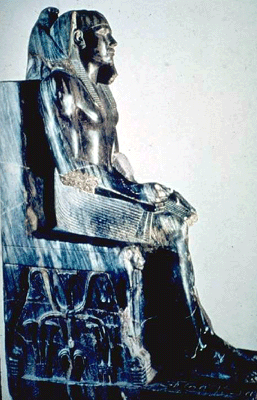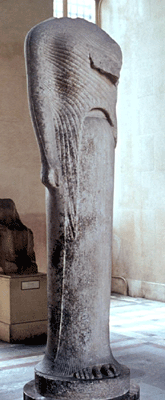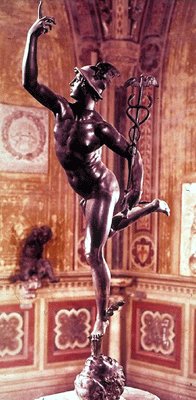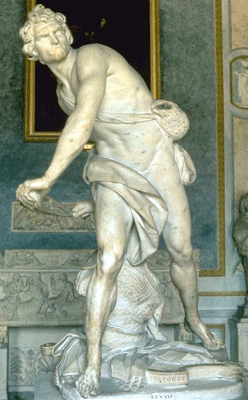
Page 11 of 17
Read the text and study the images below then move on to page 12.
8. Composition
Sculptural composition is read through the relationship of the different parts of a sculpture to each other, and through the way the sculpture is composed in space. A subtractive work that relates very closely to the material from which it is carved will create a closed composition, adhering, for example, to the cylindrical shape of the trunk or branch of a tree. In the case of stone carving, it may be quadrilateral, with four clear sides, like a block of quarried stone. This tends to give the work a formal, monumental and static quality, with a strong emphasis on front, back and sides, and is very grand and monumental in form, as we see in Egyptian sculptures, for example.


Sculptors may, however, work in a way that completely ignores the block of stone so that there is no clear front view, and the composition flows from one part to another. This kind of multi-axial composition is often open in form, reaching out into space. If working in stone, the sculptor may have to start out with a very large block and cut away a great deal to achieve open contours. Such work requires a very high level of control, and the sculptor often works from a model to develop such complex forms. The carving might even be assisted by mechanical copying devices in a process known as pointing, where a series of key points taken from the model are drilled into the block to guide the artist, who then 'joins the dots' to achieve the final form.


above Gian Lorenzo Bernini, David, marble, 1623-1624. Galleria Borghese.
This type of composition is more easily created in a malleable medium, like clay, and open, multi-axial compositions probably originated in additive materials. Casting in bronze also encouraged experimental compositions, as the different parts were often cast separately and put together to created the final work. Giambologna's bronze Mercury is a good example of an open, multi-axial composition, demonstrating the great skill of the sculptor to achieve such a complex work. Bernini's David, which is carved in marble, is equally complex in composition, although it is more firmly rooted in its base.